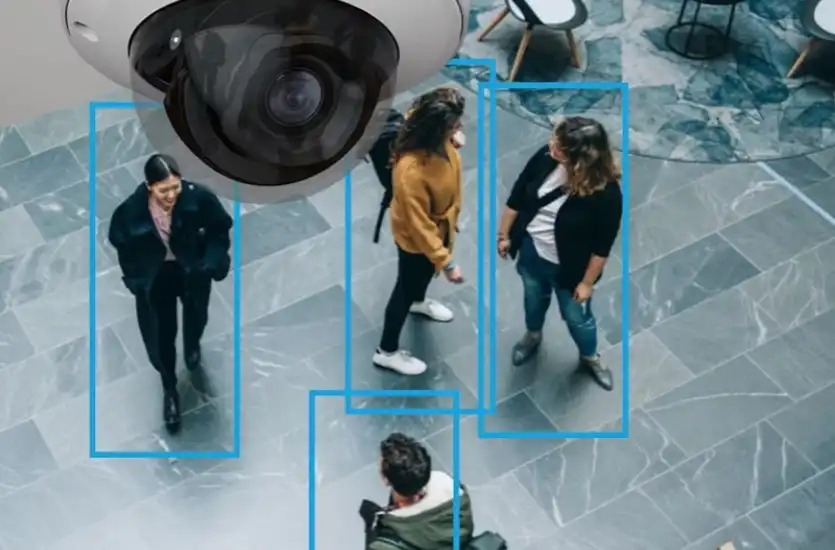Loss prevention in retail refers to strategies that businesses implement to reduce “shrink” or shrinkage caused by theft, fraud, and operational mistakes. For retailers of all sizes, these measures are essential to protecting profit margins and preserving a safe, trustworthy shopping environment for customers and staff. In busy and vulnerable environments like retail spaces, a solid loss prevention plan isn’t optional, it’s foundational.
From organized shoplifting rings to unintentional errors during inventory, retail businesses face a wide range of challenges that eat into their bottom line. Understanding where losses occur and how to mitigate them helps retail companies secure their revenue while boosting customer confidence and employee accountability.
Understanding Retail Shrinkage and Its Impact on Business
Shrinkage is the loss of inventory that occurs from theft, vendor fraud, damaged goods, and procedural errors. It directly reduces revenue and, if left unaddressed, can threaten the sustainability of a business. According to the National Retail Federation, shrink accounted for $112.1 billion in losses in 2022 across the U.S. retail industry in a single year.
Beyond financial loss, shrinkage affects overall operations. When items go missing without explanation, it disrupts restocking cycles and makes forecasting unreliable. Retailers might order unnecessary stock or fail to reorder high-performing products — ultimately impacting customer satisfaction and sales performance.
There’s also a reputational risk that comes with unmanaged shrinkage. A store known for security issues or frequent inventory discrepancies may lose the trust of customers and suppliers. Retailers aiming to protect their brand image must view loss prevention as a cost-saving measure and a proactive way to safeguard public perception.
The Most Common Causes of Retail Shrinkage
Retail shrinkage stems from a variety of sources, and understanding each cause is the first step toward effectively addressing the issue. When these factors go unchecked, they chip away at profitability and can compromise a store’s overall performance.
- Shoplifting: External theft continues to be one of the most frequent causes of shrinkage. Individuals and organized groups target valuable merchandise, often during peak hours when store employees are the busiest.
- Employee theft: Internal theft is often harder to detect but can be even more costly over time. This includes stealing merchandise, manipulating sales records, or abusing discount privileges.
- Administrative errors: Mistakes in pricing, product scanning, or inventory data entry can result in significant losses. While unintentional, these errors can accumulate quickly if not identified and corrected.
- Vendor fraud: In some cases, suppliers fail to deliver the correct items, overcharge, or falsify invoices. This type of fraud can easily go unnoticed without a thorough system for checks and verification.
Each of these issues presents unique challenges. Retailers must respond with a combination of preventive tools, staff training, and oversight to build a layered defense against shrinkage. Addressing these vulnerabilities strengthens the entire operation and supports long-term profitability.
Best Practices for Preventing Shoplifting and External Theft
Creating a secure retail environment begins with making it difficult for theft to occur in the first place. The layout of the store, the attentiveness of staff, and the use of surveillance all play critical roles in discouraging criminal behavior. Together, these strategies form the foundation of a strong external loss prevention plan.
Here are a few key practices to help reduce shoplifting and external theft:
- Designing an open and visible store layout: Clear sightlines throughout the store make it easier for staff to monitor activity. Avoiding tall displays and minimizing blind spots help reduce areas where thieves might conceal stolen goods.
- Placing high-value items strategically: Positioning expensive or frequently targeted items near registers or within lines of sight of employees makes them less accessible to would-be shoplifters.
- Training employees to engage customers: Friendly greetings and regular interaction with shoppers enhance customer service and send a clear message that staff are alert and present.
- Identifying suspicious behavior: Employees should be trained to recognize signs of potential theft, such as individuals avoiding eye contact, loitering without making a purchase, or working in groups to create distractions.
- Deploying security personnel: Staff dedicated to monitoring high-risk areas or acting as visible deterrents can reduce the likelihood of incidents. Their presence often discourages impulsive and organized theft alike.
- Using surveillance systems: Cameras positioned at entrances, exits, and key product areas help record and deter theft attempts. Reviewing footage regularly ensures that incidents are identified and handled swiftly.
Every store is different, but applying these core principles can dramatically improve a retailer’s ability to prevent theft. When employees are trained, technology is in place, and a store’s design supports visibility, the environment becomes far less inviting for those with dishonest intentions.
Leveraging Surveillance and Security Technology
Modern retail security relies heavily on smart technology. High-definition security cameras deter shoplifters and provide evidence if theft occurs. Alarm systems protect entrances and exits, while electronic article surveillance (EAS) tags on merchandise make it harder to leave the store with unpaid items.
Real-time monitoring powered by artificial intelligence (AI) further enhances loss prevention. These systems can detect suspicious behavior, such as lingering in one area too long or unusual patterns of movement, and alert staff immediately. The presence of technology not only stops theft in progress but also sends a clear message to potential offenders: this store takes security seriously.
How To Prevent Employee Theft and Internal Fraud
Internal theft accounts for a large percentage of retail shrinkage, making it vital to address the risks inside the store. Employees have access to merchandise, point-of-sale systems, and sensitive inventory records. When there’s a lack of oversight, temptation can take hold.
Preventing this requires a combination of systems and culture. Conducting background checks during the hiring process helps employers identify potential red flags early. Clear policies about theft and consequences should also be part of employee handbooks and reinforced through regular training.
Inventory controls such as barcode scanning, stock logs, and audit trails help reduce vulnerabilities. However, none of these measures will matter if a company culture doesn’t support integrity. Encouraging open communication, rewarding honesty, and providing transparent reporting channels can help prevent unethical behavior.
The Role of Two-Way Radios in Retail Security and Loss Prevention
Portable two-way radios are essential for connecting teams during security incidents and day-to-day operations. These devices allow quick communication between employees, managers, and security personnel without relying on unreliable cell service or public address (PA) announcements.
The right radio system improves response time and coordination in retail environments. Motorola’s MOTOTRBO portable radios, including the Motorola R7, offer features such as noise suppression, clear voice communication, Bluetooth, and long-lasting batteries. Mobile radio options like MOTOTRBO mobile radios provide storewide coverage, while MOTOTRBO infrastructure ensures seamless communication across large or multi-level retail properties.
With group messaging, emergency alerts, and hands-free options, two-way radios are indispensable in any retail loss prevention toolkit.

Strengthening Inventory Management To Reduce Losses
Accurate inventory tracking is at the heart of effective loss prevention. If stores don’t know what they have, they can’t detect when something goes missing. Digital inventory systems allow businesses to monitor stock levels in real time and compare actual counts to expected ones.
Radio-frequency identification (RFID) technology and barcode scanning reduce manual input errors and make cycle counting more efficient. These tools provide detailed insights into what products are selling, which products aren’t, and what inventory might have vanished between shipments and shelves.
Routine audits also support inventory management. Whether conducted weekly or monthly, these checks help uncover shrinkage patterns and keep employees accountable. A strong inventory management system is a back-office solution that directly impacts profitability and operational success.
Implementing Employee Training Programs for Loss Prevention in Retail Stores
Training is one of the most effective tools in preventing retail theft. Employees should be taught to recognize suspicious behavior, confidently approach customers, and follow proper security protocols. Role-playing exercises can simulate common scenarios, helping staff feel prepared for real-life situations.
Security awareness programs remind team members of the importance of vigilance, while ongoing education reinforces key principles. Loss prevention training should start during onboarding and continue throughout an employee’s tenure.
Encouraging staff to ask questions and report concerns helps create a culture of accountability. With well-trained employees on the floor, retailers can prevent issues before they escalate into costly incidents.
Responding to Theft and Security Incidents in Retail
Despite best efforts, thefts may still occur. When they do, having a clear response plan is essential. Store associates should know precisely what steps to take, who to contact, how to document an incident, and what details to provide.
Managers and security teams also need protocols for reviewing footage, preserving evidence, and determining whether to involve law enforcement. A measured response reduces chaos and protects the safety of customers and staff.
Legal considerations also come into play. Retail stores must follow applicable laws regarding detaining suspected shoplifters and avoid any actions that could lead to liability. Training teams on these legal boundaries ensures that incidents are handled professionally and responsibly.






